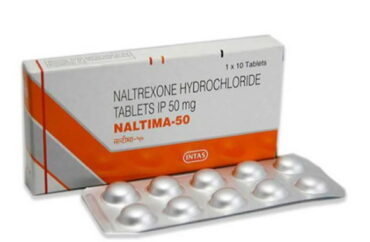
The leading cause of death among young people today is a fentanyl overdose, and while the strong synthetic opioid has become more well known among Americans, how best to combat it still remains a struggle for parents and educators.
One addiction expert said an effective way to combat the epidemic needs more attention, especially on college campuses: naltrexone.
The “anticraving medication” is taken daily to block opioids’ euphoric effects, helping detoxed addicts from relapsing, said Percy Menzies with Assisted Recovery Centers of America.
Combined with counseling and behavioral treatment, naltrexone helps provide a longterm solution for struggling addicts in recovery, and colleges should make their campus communities aware of naltrexone, he said in a recent telephone interview.
The drug is also clinically effective in blocking highs from alcohol abuse, another huge struggle for college students, he said. Many college students aged 18 to 22 suffer from substance abuse disorder, according to various stats.
“The goal is to offer students a clear, logical choice to prevent opioid and alcohol use and make this generic medication as well known as naloxone,” Menzies told The College Fix.
Naloxone, most commonly known as Narcan, is only taken after an opioid overdose. It blocks the drug from being absorbed by the body. In contrast, naltrexone, an FDA-approved nonaddictive drug, helps students break the cycle of cravings amid self-help groups, counseling, and other treatment options while still enrolled in classes, he said.
“We have this myth that the only way to get well is to go away for 30 days,” Menzies said. “The vast majority of the patients can be successfully treated on an outpatient basis.”
“…We believe that addiction treatment of alcoholism and drugs should be like getting off smoking,” Menzies told The Fix. “If you’re smoking, you don’t go away for 30 days to a program. Why should it be any different for alcohol or drugs?”
Menzies is founder of Assisted Recovery Centers of America, one of the largest programs providing anticraving medications and behavioral treatment in Missouri. Before founding ARCA, Menzies worked for the pharma division of DuPont, where he helped market naloxone and naltrexone.
Menzies said he has no current financial interest in any pharmaceutical product or company; he left DuPont about 24 years ago to start “evidence-based outpatient treatment programs.”
Menzies said he believes a medical approach to substance abuse disorder is the most effective road to recovery.
“Naltrexone is taken by a patient and a single pill prevents any opioid from activating the brain for up to 24 hours … it gives you a fighting chance not to relapse,” he said.
Narcan — which today is widely touted among first responders, parents of kids struggling with addiction, and lawmakers looking to find solutions to the epidemic — has limitations, he said.
“It can only be given after an overdose, it can be given only by a person other than the patient, and it lasts for only 30 to 45 minutes,” Menzies said.
With that, Narcan is not a preventative drug, he said. But, he added, naltrexone alone cannot end addiction, emphasizing the role of behavior modification through counseling as part of the solution, including with alcohol abuse — historically a significant problem on college campuses.
Students participate in risky drinking and binge drinking as a form of socialization, and while most college campuses educate students on the dangers of drinking, some campuses are even starting recovery centers, he said.
Naltrexone can help maintain sobriety for students who have stopped drinking, or at a minimum to cut down on drinking, he said.
“The person takes a pill before drinking and it helps the person to stop at one to two drinks … because the incentive to have additional drinks is not there,” he said.
Menzies said safe prevention sites on campuses should be established to educate people about substance abuse and provide information and access to naltrexone.
A slogan Menzies suggested: I hate opioids; I am on naltrexone; Ask me about naltrexone.
He said he finds students dying from alcohol poisoning and drug addiction unacceptable.
“We have options,” Menzies said. “We have highly effective tools. Why are we so reluctant to deploy them? Instead of seeking help, students remain quiet because they don’t know what else to do.”
Menzies said educating sororities, fraternities, and freshmen during orientation on the dangers of alcohol and drugs should include discussions of naltrexone instead of just touting Narcan and fentanyl test strips as solutions.
“The goal,” he said, “is to give young college students an option in case they run into a problem.”
MORE: West Point cadets’ fentanyl ODs offer cautionary tale for today’s spring breakers
IMAGE: Addiction Resources
Like The College Fix on Facebook / Follow us on Twitter






Please join the conversation about our stories on Facebook, Twitter, Instagram, Reddit, MeWe, Rumble, Gab, Minds and Gettr.